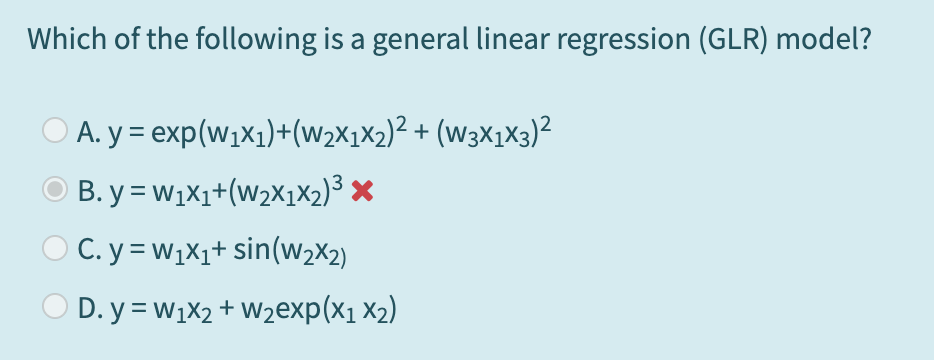Intro to AI
1/33
There's no tags or description
Looks like no tags are added yet.
Name | Mastery | Learn | Test | Matching | Spaced |
|---|
No study sessions yet.
34 Terms
attribute
quality describing an observation - ex: color
feature
an attribute and value combination ex: color is blue
observation/instance
a datapoint or sample in dataset
training set
a set of instances used to train a ML model
if supervised its X and Y, if unsupervised just X
test set
set of instances used at the end of model training and validation to assess the predictive power of model
random variable
unknown value that follows certain probability distribution ex: X ~ N(0,1) with 0 as mean and 1 as the variance, divided into discrete (countable) summation and continuous integral
sum squared error
Sum of (yi - wxi)2 = wx
Four things required for ML
data
model
optimization
goal (objective function, optimal loss function ex: SSE)
Bias term regression - how do you determine the function
same way as SSE, use least squares to determine w0 (y-int) and w1 (slope) deriving in terms of that variable
Linearity Assumption
forces the predictor to be a linear combination of features (the function can be approximated by linear/constant shape)
homoscedasticity
variance of the residual error is assumed to be constant over the entire feature space
independence
assumed that each instance is independent of any other instance
independence of each instance sample, close but diff from multicollinearity
fixed features
input features are considered “fixed” - they are treated like “given constants” and are not random variables (no pdf or pmf) this implies they are free of measurement errors
absence of multicollinearity
can’t have strongly correlated features of an instance, b/c if 2 features are strongly correlated it means that there are infinitely many solutions and can’t solve uniquely
independence of features within a vector
General Linear Regression
used when can’t use linear function to estimate, and need a ply


Phi(x)
basis function - common ones are polynomial
polynomial basis function p =1 and phii(x) = x
GLR reduces to univariate linear regression, d = 1
polynomial basis function p = 1 and phii(x) = x (feature vector)
GLR reduces to multivariate linear regression
polynomial basis function p = 2 and phii(x) = x2
GLR reduces to univarate polynomial order 2 regression, so d = 1
Number of parameters of regression GLR
grows exponentially with respect to polynomial order (p) and feature dimension (d) - (d+p)! / (d! p!)
multivariate
means that feature vector (d) > 1 means that there are more than one feature in the vector X
univariate
one feature in feature vector x
why is the correlation coefficient matrix important
when designing your feature vector, you know which features may contribute to multicollinearity and weaken your analysis
how do you determine if you can use left / right inverse
rank !!! left inverse rank = of phi T * phi = k + 1
right inverse rank = phi * phi-1 = n
don’t use coefficient correlation matrix, that’s for heuristic analysis, and further analysis
what does a singular matrix imply
there are infinitely many solutions, however the model and parameters are still solvable GLR, but the parameters are not unique
causes of no left inverse
multicollinearity, or perfectly correlated features (problem between features)
causes of no right inverse
dependent samples, or perfect correlations among SAMPLES (problem between samples)
rank deficient
rank is less than the rank if the matrix was independent, and invertible
pros and cons of pseudo inverse solution
+: fast, analytic (close form) solution
-: expensive if both k and n are large
multicollinearity issue
row rank issue
independence between observations
col rank issue
multicollinearity between features
calc coeff matrix
don’t include bias column
calc rank